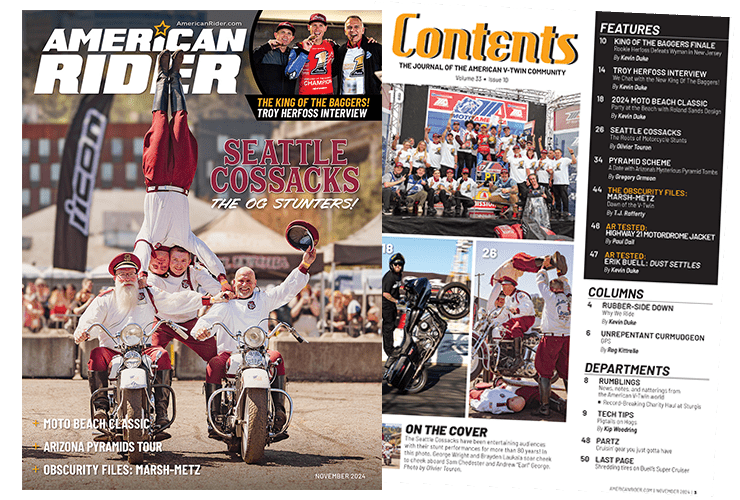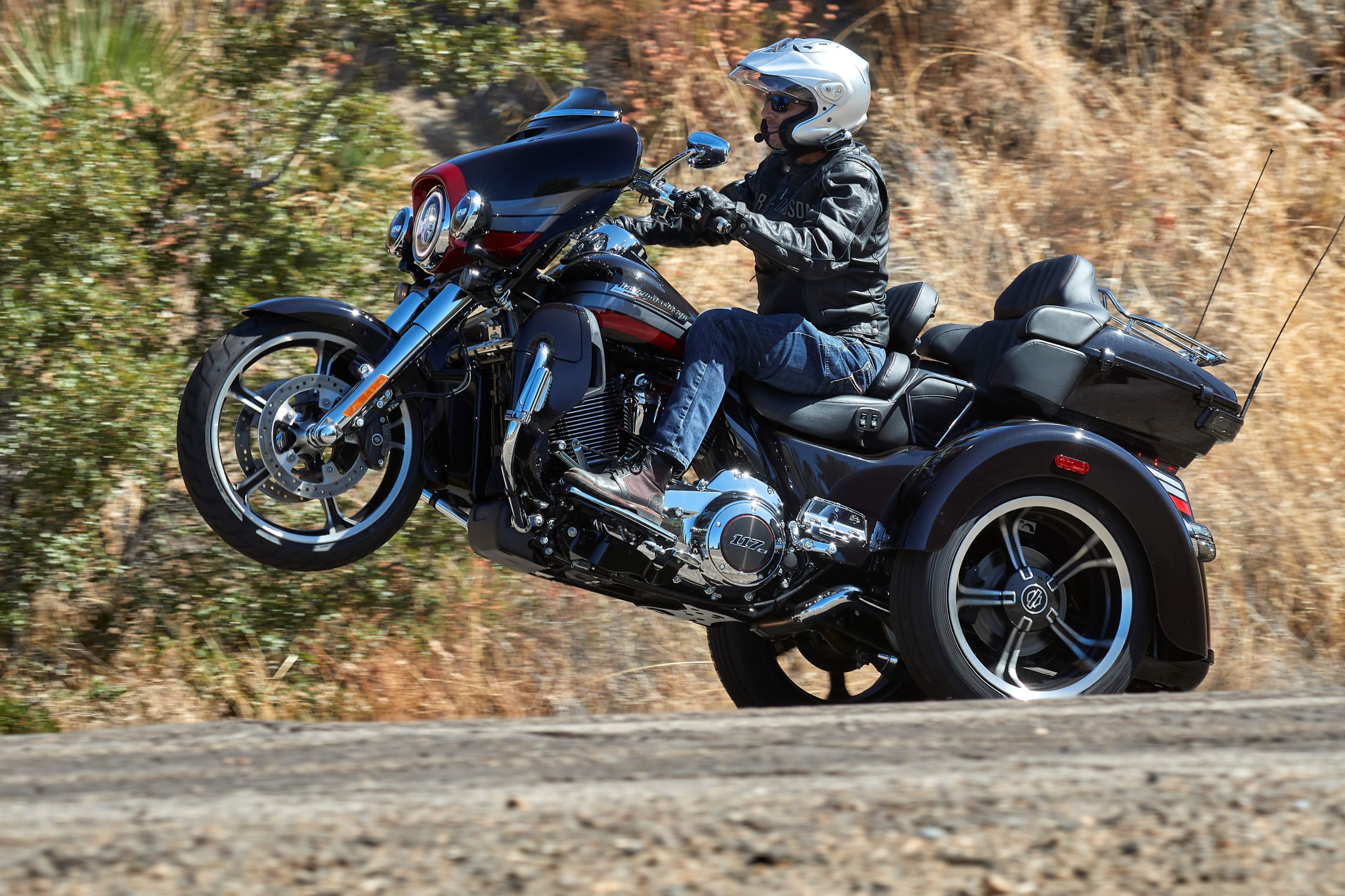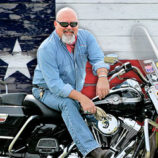When Harley-Davidson takes the plunge into sexually charged advertising, they go all in. They don’t content themselves with hiring some no-name cheesecake, they contract with Marisa Miller—a woman whose resumé includes Victoria’s Secret lingerie model and Sports Illustrated swimsuit issue cover girl, and who notched the number one slot on Maxim magazines’s 2008 Hot 100 List—dress her like a dominatrix and drape her on Milwaukee iron. I’m speaking, of course, of the recent heavily hyped and high-style advertising campaign for the new V-Rod Muscle VRSCF (or, as I call it now, the VRSC-cup) that brings together what are arguably America’s two best-looking models. And while the campaign has garnered the mainstream buzz they were shooting for in this endeavor, there’s more to it than that for inveterate Harley watchers.
What we have here is nothing less than a sea change for The Motor Company in terms of their use of sex in marketing. Harley has up to this point demonstrated a long and inflexible aversion to cheesecake in their corporate advertising, and it’s a position they’ve gone to some lengths to enforce upon their dealers as well, with admittedly mixed results over time. That aversion can be attributed to a quaint and endearing Midwestern stodginess, if that helps, but regardless, it’s endured even while being out of sync with societal norms and tastes in other regions of the country, if not, frankly, in general.
In that respect, the VRSC-cup campaign is an overdue break with tradition, but a measured one in execution. The campaign’s print media component has been restricted to mainstream male-oriented publications like Esquire, GQ, and Complex; titles where no hand-wringing attends the placement of glamorous skin images. You can call that targeted marketing, and you can also call it hedging a bet since it deftly sidesteps, to some degree at least, the potential backlash from the empowered female consumers who figure so pivotally in the company’s ridership expansion strategy and who don’t want to see this kind of thing in publications like, say, THUNDER PRESS.
And that’s exactly where I’m going with all of this. I’m positively ecstatic about the VRSC-cup campaign, but not for the reasons you’d naturally assume in an average American guy like me (Joe the editor). No, I’m happy about it because misery likes company, and doubtless Harley-Davidson will soon be dealing with the type of mail I’ve had to deal with of late, as the issue of sex in advertising has arisen yet again as reliably as the issues of what constitutes a real biker, and who’s supposed to wave at whom.
It started last month with a letter accusing us of lowering our standards and permitting sexually “degrading” depictions of women in our ads, and I responded to that letter thoughtfully, but clearly not sufficiently, with a rough-and-ready explanation of where we draw the line. That brought more mail. And rather than address those concerns in the limited space of the letters column, I agonized over a more thorough response and figured to editorialize about it, which I’ll do now: There’s a big difference between something that’s sexy and something that’s sexually degrading. To those who believe that exposed skin is in and of itself degrading, I would recommend Taliban membership and question your definition of “degrading.” My own definition of degrading in this context is any image that is dehumanizing, insulting, cruelly objectifying, or otherwise patently misogynist or misandrist on its face. That’s the starting point, and an example of that would probably be any ad depicting someone wearing a leash (unless, possibly, the ad is from a leash manufacturer, but we don’t get any of those, so I get to dodge that debate). Beyond that, everything gets a little fuzzy as “degrading” shades over into merely “gratuitous.” It’s a tough call to make at times, but to broadly suggest that sex has nothing to do with motorcycles is to know nothing of motorcycles or the people who ride them. Is a model attired in a halter top and short shorts appropriate when peddling halter tops and short shorts but out of line when peddling a V-Rod or even a V-Rod gasket set? I don’t honestly see how. And let’s face it, gasket sets need all the sexing up they can get, since no one—with the possible exception of Kip Woodring—finds them inherently hot.
In my long involvement in and study of motoculture, I’ve come to the firm conclusion that bikers, by and large, aren’t sexists, but that they are, again by and large, oversexed. And I wouldn’t have it any other way. This is fun, people. This is unabashedly joyous and humanistic. This is motorcycling. And now that The Motor Company sees things the same way I do and can, henceforth, take all the heat on this issue, as far as I’m concerned, we at THUNDER PRESS can get back to more important matters like why real bikers don’t ride V-Rods and never wave. Let the mail begin.
It’s all right here in the diaries.

















